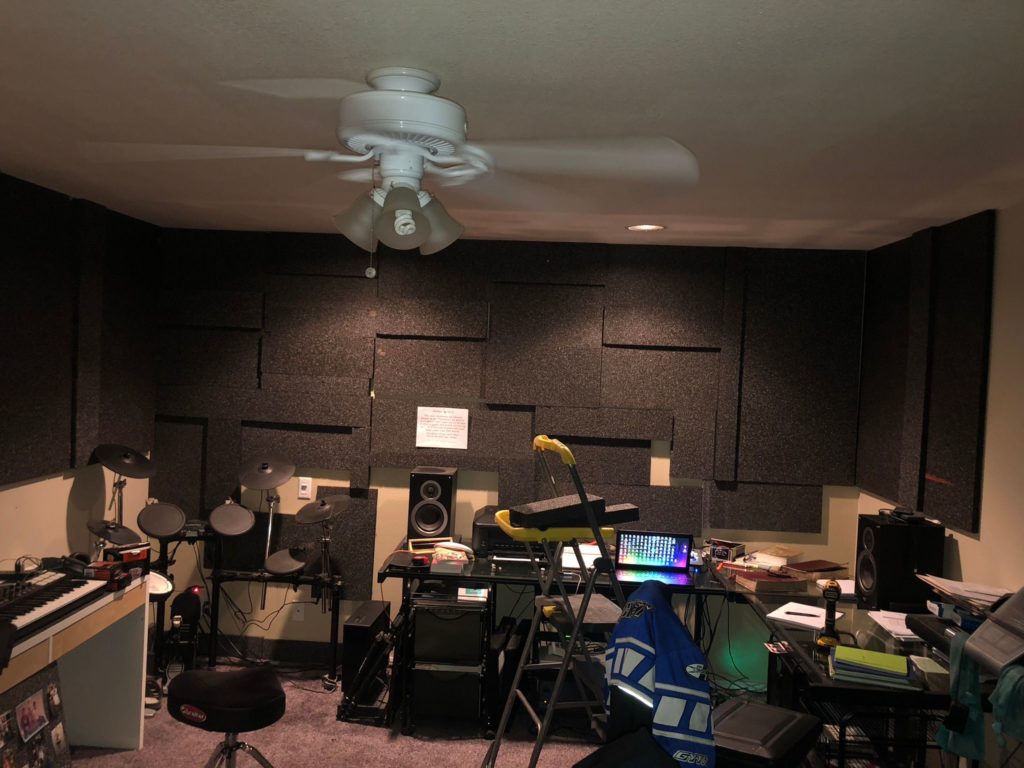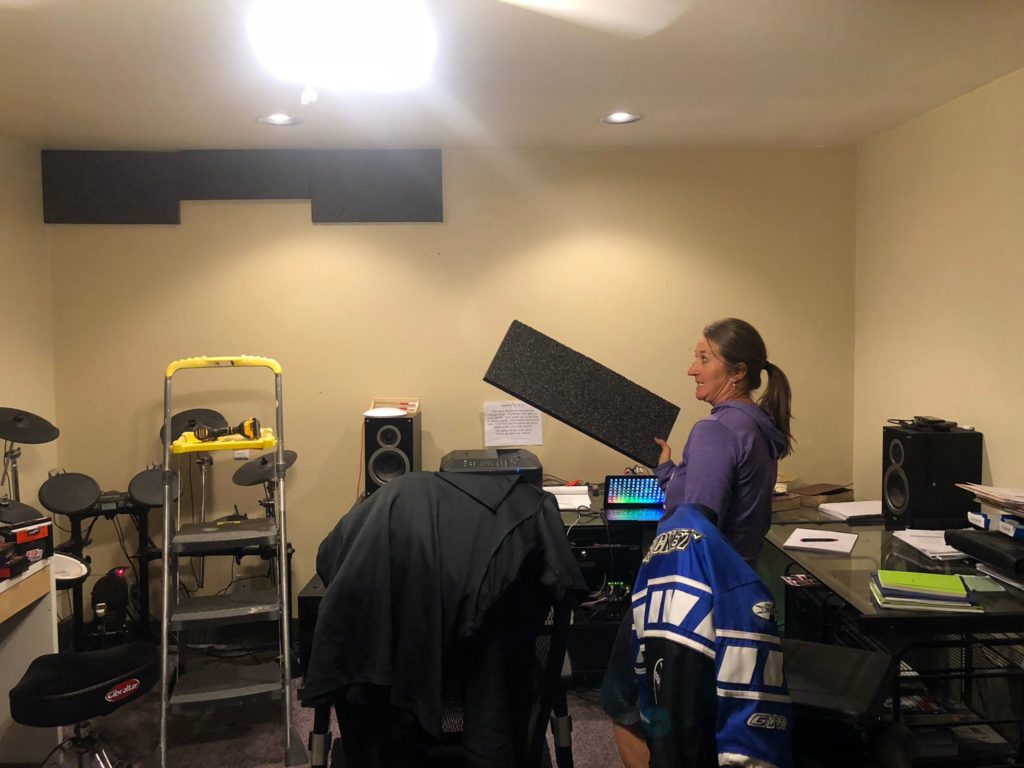Audio Visual Bend Blog
All that is gold does not glitter

Photo By: Page Cafe
Things to keep in mind when establishing the reputation of your company.
Written By: Tony Sprando and Kate Couch
Most people fall under the assumption that reputation can only be built over time. The mom-and-pop shop that’s been around since the 50s doing things the good old-fashioned way. Or the tried-and-true Google ratings. Though these things can be important for a business to have they are not everything. It seems like everyone is so focused on the “eye candy.” What can they do to instantly catch people’s attention? A flashy website, cool photos, merchandise, or a 5-star review on Google. But the problem is with the focus placed on the things that may satisfy the instant gratification, the hard-working, job well-done, reputation can fall through the cracks. When browsing the internet the internet, cool, stock images may catch the eye but don’t really replace or represent a good reputation
This idea of judging a book by its cover has been around for eons. When looking for a place to eat, when looking for a new book to read, even when looking for a spouse we tend to go with things that we notice first, things that catch our eye. The problem with these things is that they tend to not last or properly represent their value. I have read plenty of books with gorgeous covers and even better pages, I have also chosen based of the flashy cover and they ended up being awful. There is precedent importance on the little things, though not as shiny they hold a much deeper hidden weight.
What makes a good company good?
When thinking about what makes good company things like excellent customer service, quality products, timely delivery and installation, and pleasant employees all come to mind. These things often drive the inspiration for a five-star rating on Google. Novice business owners frequently focus on getting the rating rather than building the foundation for these grounds. If you want good reviews on the internet look at where your customers are most frequently involved with your company. How is your customer service? If you’re providing a service like AV are you executing their ideas and solving their problems? These things will build an excellent reputation for your brand.
What is AV Bend’s formula?
Every job comes down to the person leaving it from start to finish. Did the customer have a good experience on the phone? Did the customer’s ideas get executed properly? Did the customer understand what was happening and what technology or systems were being integrated into their business or home? These are the questions that AV Bend asks themselves while on the job to make sure that the job, start to finish is done properly and the customer feels satisfied. These are the grounds for a good reputation, that any business AV or not can follow.
An AV Bend Story
Most of our AV jobs are start to finish but every once in a while we’ll have particularly more involvement with the customer involving higher-level AV techs. In one case, a customer needed more training (learning how to operate the things being installed) on their project than what was in our normal scope of work, so they felt frustrated. This is understandable and luckily doesn’t happen too frequently. There’s always a way to make things right. We made a point to take the customer out to lunch and listen. Listening is the best tool we have. This made them feel important and we then proceeded to buy the entire onsite team dinner and provide an in-depth training session. This wrapped up the job nicely, informed all of our employees, and made a customer feel listened to. All these things were important to making the project properly executed.
Listening in any area of life is extraordinarily important and gives me the difference between a good reputation and a bad one.
Like a fine wine

Photo By: Ion Ceban
Written By: Tony Sprando and Kate Couch
“Age appears to be best in four things, – old wood best to burn, old wine to drink, old friends to trust, and old authors to read.” – Alonso Of Aragon
Age is something we have been redefining for many years as a human race. In the 40s children were seen and not heard, today children are brought to work and meetings and expected to be kept entertained by their 8×12 screens that they are constantly glued to. When I was a teenager I knew all the latest tech but now I’m (slowly) slipping behind. My mother-in-law though, not tech-savvy, picks up things as fast as ever. She is I presume sharper than most people her age. My beautiful wife does not keep up with technology and prefers to be outside. Due to this, she has much better eyesight than I do, however, I have better hearing. It’s a two-way street of what we choose to invest our time in.
As we get older and more mature the brain changes drastically. Most people are aware of this, it’s called cognitive decline. It’s a sad thing to go through and to see others go through. When things that are so drastically important to us like, hearing, seeing, our ability to learn, and our memory slowly worsen with every year. It can be hard as a parent, friend, loved one, or business owner to know how to properly help people experiencing this. Age Is something not a lot of people take into account when doing custom work for clients. It’s something that’s overlooked but extraordinarily important.
It’s important to understand at what ages different needs need to be met. As someone reaches the age of 60 they have a hard time keeping things organized, remembering things, and hearing and seeing things. If you have someone over the age of 60 for a client you want to make sure that you’re catering to these needs. For example, in audiovisual, if you have an older client it is important that you are making sure that the speakers in an in-home speaker system are arranged properly so they can hear it. Checking that older clients technology you might be installing is easy for them to use, and that they understand what you’re putting in their home is another important thing you can consider. Solving organization problems and making sure that your clients know how to properly use what you’re installing and understand its function. Just because somebody comes to you with a problem, doesn’t necessarily mean that they understand the solution.
When it comes to this in Audio Visual it’s important to take into account age with any client you have. For example, if you are installing soundproof panels into a nursery something that is professional, business style, and chic probably wouldn’t cater to that age or audience. You need to take into account the problems that you are solving will also considering the age of the client installing something that is more child-proof and childlike is more likely to leave the customer satisfied.
If you are installing a meeting room for a business whose employees are young and tech-savvy you can keep that in mind when integrating the latest and smartest technology. Integrating a necessary thing like a zoom room into a company that has older employees that don’t know how to use technology but are going to rely on Zoom calls. You can use technology that’s more straightforward organized and easy to use. It’s very easy to cater to a client’s age if you just consider the problem that they need to solve and how their age affects that problem.
What is Smart?

Defining the word that has had so many meanings over the past one hundred years.
Written By: Kate Couch
“Okay, Einstien.” “That was smart!” “You’re baby is so smart.”These are all common sayings we’ve heard that center around the idea of smart or intelligence. But what is smart? As we progressed further into the 21st century, technology seems to be out doing itself every day. The stock market is skyrocketing, the way we interact with each other and do business has changed completely, and the internet seems to rule our lives. So when we hear the word “smart” how has its meaning changed? Most of you have a smartphone in your pocket, many teachers have smart boards (a technology integrated touch screen whiteboard with a proprietary pen with software) and our kitchen is filled with “smart” appliances.
How this applies today
Today the word smart can be used to reference technology, specifically artificial intelligence technology. AI was a word that scared a lot of people a decade or two ago. Now it’s nearly unavoidable. With the word smart directly correlating to an item having some sort of artificial intelligence, smart devices, and AI devices, are in more places than we realize. The demonizing of artificial intelligence through science fiction movies is what caused a lot of pandemonium when it came to the idea of your technology being “smart.” The truth is, there’s a lot of benefits to having smart technology. We know it’s constantly making our lives easier and more efficient. Especially right now, as we heavily rely on technology to carry our schools and jobs.
Where does AV come in?
Audio and visual technology and setup have become extremely important during the pandemic; especially relating to zoom rooms. Audio Visual Bend does Zoom rooms for clients since the pandemic. A Zoom room is essentially a room with an acoustical treatment plan, cameras, microphones, and a speaker setup for Zoom meetings. It’s an essential function to help schools and businesses have effective and efficient meetings. Having properly set up cameras, speakers, and microphone systems make the stress of having a zoom meeting melt away. In addition to this, the soundproofing and acoustical treatment plan will diminish the possibility disrupting of others and minimize others disrupting you.
Audio Visual and smart technology doesn’t end with Zoom meetings though. Before the pandemic audiovisual mixed with smart technology often looked like integrating smart devices and appliances. Often customers would want in-home speaker systems and automatic lighting that can be adjusted with simpler panels or even from their phones. Customers often strived for a result that was less autonomous.
Where is it going?
Audio-visual definitely has some changes coming in the future with the way technology is going. 10 years ago audiovisual was more corporate-based and for wealthier clients. But as technology progresses audio-visual becomes more affordable. Audio Visual Bend predicts that more of our customers want to be integrating systems into their homes like speakers, cameras, projectors, and acoustical treatments over the next few years. It will start to look more like an in-home service industry model, rather than a one-time installation of a product or solving a problem. It’ll be something that’s ongoing integrating new technology into homes and corporate offices.
Smart is definitely a peculiar word with lots of meaning. But with new waves of technology coming out all the time and audio and visual being thrown into an entirely new pool of opportunities the word “smart” really has developed its own new meaning.
DIY Music and Workout Studio

Earlier this year I found myself in predicament. Late at night, I would like to lift weights, work out, and do a bit of overtime, all while blasting music to keep the energy up. This quickly caused a problem as the rest of the household didn’t appreciate the concerts I held in the middle of the night, not to mention the neighbors that didn’t want that either. So I had a couple of options, I could go to a 24-hour gym (which at the time were open but little did I know that would have been a temporary fix) Or I could design my own workspace that would reduce the sound by drafting an acoustical treatment plan.
Avoiding the sweaty gyms and having the freedom of being in my own home while having the option to have my music through a speaker was a no brainer choice. So my wife and I designed an acoustical plan.

What is an acoustical treatment plan?
In short, it is a design that will solve your problems and make the room better for recording and listening to audio. When making an acoustical treatment plan you need to decide what your main problems are and how much coverage you need. Most people need between 25% and 75% coverage. This is only for the walls and ceiling. Most people forget when treating a room that the ceiling is just as important when it comes to treating a room as the walls are. So when buying or collecting materials make sure to pick up some for the ceiling too.
How do you go about it?
When I was making mine I decided to use scraps from a previous project. I had odd shapes of sound silencer material, which was perfect for the outcome but the shapes would be a creative challenge. My wife and I spent time maneuvering the pieces into intricate designs that would get the job done while still being aesthetically pleasing. This process saved us money and kept our room design unique, compared to the typical soundproofing methods.
Find a store that sells soundproofing materials then draw out a design for your room while placement is important that doesn’t mean you can’t make pieces that look good in the right places. The sound silencer is a unique product, from an initial look it looks like styrofoam but it is actually tiny engineered beads molded together, which is both functional and pleasing to the eyes.
After implementing this plan the sound was reduced drastically. I now have a place where I can do work and be as loud as needed while others can sleep peacefully just a wall away. My wife and I had a great time working on this together it was a good problem-solving experience and gave us some extra time together. Most people think that acoustical treatments are eyesores…and they wouldn’t be completely wrong. It’s great that we were able to come up with something that worked for our space and looked cool.
Putting soundproof panels behind canvas pictures, or cutting them into unique designs are simple ways you can make acoustical treatments a designing choice instead of a functional eyesore. This project was cost-effective, made use of old material, and solved our main problem.
By Tony Sprando
Sources used
https://advancedacoustics-uk.com/pages/how-much-acoustic-treatment-should-i-install
Why the Wow Factor is Overrated

WOW Factor
Upon researching definitions for the “wow factor,” I came across the following descriptions:
- A set of properties belonging to an object or service that pleasantly surprises a consumer. From commercials to cool electronics, the wow factor is an important aspect to consider.
- A striking or impressive feature
- We create entertaining and interactive experiences that result in positive consumer engagement with your brand… that is The WOW factor!
And while these definitions and descriptions definitely have their place in marketing and promotions, I believe that for the AV industry, the wow factor is totally overrated. I have found that at the end of every project I have completed, my customers weren’t looking for the wow factor. They just wanted a system that was easy to operate.
Project Take-Overs
For example, I’ve had a couple project “take-overs,” which means I took a project over from another AV company. While this other AV company had the project for a few years, the customer chose to use my services instead for two key reasons:
- The system was over-engineered and therefore, costly to support
- The system was poorly installed and consequently required a service contract to keep it running.
As I initially looked at the project site and its technology, it was obvious the initial AV company sold the customers the most expensive solution. This trapped them into a never-ending spiral of being dependent on the AV company to keep the system running. The customer was 60% pleased with the system and merely tolerated what they believed to be the only option. They felt stuck.
The Issue with the Wow Factor
Herein lies the issue of the wow factor — get the customer to just nod and trust whatever the AV consultant says, without really understanding what they are getting. This is also called being steam rolled. Most AV salespersons are pretty prideful and will tell you want you need and they know best. Beware of this. If you can discern some humility in your initial meeting with them, proceed. Otherwise be cautions.
Speaking of reasons to be cautious, remember the proverbial saying, “All that glitters is not gold.” Shakespeare is the best-known writer to have expressed this idea and it has many meanings:
- The shining outer look of something is not a consistent sign of its real character,
- Not everyone that appears good, turns out to be good,
- Not everything that is apparently glittery is precious, and
- Something that looks to be perfect but not in real life.
Watch Out for These Sales Traits
While I couldn’t find any clear and focused resources on helping you identify poor sales techniques from a customer’s perspective, the Sales Hacker had an insightful list of poor sales traits including:
- A salesperson who is as clueless about the product as the customer.
- A salesperson who loves talking so much that they forgot to listen.
- A salesperson who is unable to ask the right questions.
- A salesperson who has a sense of entitlement for being so good at what they do.
- A salesperson who views everyone as a prospect.
- A salesperson who is more focused on products that on people.
Again, beware of the wow factor in either the company, the salesperson or the technology. Choose a company and consultant with a proven track record of service and customer referrals. And get out of the way of those steam rollers.
Tonytheavguy.com
tony@avdesignsnow.com
Article Sources:
Urban Dictionary
Dictionary.com
The Wow Factor – Los Angeles and New York
The Idioms
The Sales Hacker
The Effects of 5G on the AV Industry

Photo by Denys Nevozhai on Unsplash
The arrival of 5G is transforming technology and our AV industry. You can barely scan your News Feed or watch television without some type of news or advertisement about 5G and its impending impact on your life. And while this whole 5G thing sounds like amazing hype, I’ve found that many of our customers and my colleagues aren’t certain of what it is and how it actually will affect their lives and our industry.
Let’s start with some definitions and explanations.
What is 5G?
The “G” in the term 5G stands for generation and relates to the speed, connectivity and reliability of our wireless devices.
In the beginning, we had 1G which essentially allowed us to talk to each other. With the development of 2G, we moved into the realm of sending messages. The next leap was 3G, which gave us broad data and internet connectivity. Now, we have 4G, which made all of the previously mentioned aspects a whole lot faster. But 5G is a game changer and a massive breakthrough for devices not only connected to the internet but also with each other. While 4G is pretty fast, 5G is real time fast. In fact, it is 150 times faster than 4G.
Which Industries Will Experience the Most Profound Effects of 5G?
You may have noticed that home 5G has already rolled out. Smart homes connected through the Internet of Things is actually common is some of the major international cities. Full roll-out of 5G across the globe is expected to begin in March 2020. And within a few years, the average person will interact with 5G technology in a variety of potential ways.
Medical Industry – Because 5G will allow wireless communication in real time across the world, many medical services will be provided remotely. Robotic surgeries will be performed in one location of the world by a surgeon “operating” from a different location. Patients will be linked to hospitals with monitoring services within the comfort of their own homes.
Manufacturing Industry – Smart factories are already being developed with wireless robots interfacing in perfect synchronicity.
Food Industry – Drones will simply fly over crops to monitor the health of our food. With 5G, they will give individualized attention, nutrition and water to our food sources.
Entertainment Industry – Imagine your virtual reality device connected to other gamers across the world and interacting with them in real time. It’s coming.
Transportation Industry – Driver-less vehicles in major cities will be transporting passengers at speeds up to 200mph and in an accident-free environment.
5G Will Drive AV Technology
AV professionals will have plenty of opportunity to capitalize on the 5G movement as it becomes more and more commonplace. Right now, many businesses are discussing design and infrastructure options in anticipation of 5G networking.
Due to on-the-go connections and networking, employees will be able to collaborate anywhere. Existing AV technology like video conferencing will be real time fast and it is a given that virtual reality will be a future daily practice as well. The conferencing experience will include intelligent cameras and omnidirectional microphones enabling participates to view the entire conference area.
Digital signage is another opportunity area for AV professionals as well. Facial recognition programs will enable digital signage to be real time fast and personalized.
What are you doing to prepare for the 5G roll out? Let us know with your comments!
Tony Sprando
Tonytheavguy.com
tony@avdesignsnow.com
Thank you to the following sources of 5G intel!
https://www.digitaltrends.com/mobile/what-is-5g/
https://www.hardingloevner.com/why-5g-will-transform-much-more-than-telecommunications/
https://www.conferencetech.com/how-5g-will-spur-av-technology-this-year/
https://www.linkedin.com/pulse/effects-5g-av-industry-tony-sprando
Bidding Out Your AVL System – Part 4

Key Phases in AVL Design begin with a solid team of key players using the best tools and technology for the job. With good communication strategies, productive meetings will lead to successful project completion.
Thank you for joining us for Part 4 in our series. So far, we’ve presented:
Part 1 – The Key Players in AVL Design
Part 2 – The Key Tools in AVL Design
Part 3 – The Key Phases in AVL Design
Now, we’ll finish our series by addressing the final phase of AVL Design – Bidding out your AVL system. Read more »
The Key Phases in AVL Design – Part 3

Selecting a consultant or design-build partner is the most important step of this whole AVL design process. How do you take the time to get to know this person in order to make a wise decision for your project?
In Part 1 of our AVL Design series, we listed and summarized the Key Players in AVL Design. Then, in Part 2, we shared about the Key Tools that those Key Players may interact with and use. For Part 3, we will move forward to discuss the important phases of the design process. Let’s begin with the most important element to the success of each phases – communication. Read more »
The Key Tools in AVL Design – Part 2

Once you know the key players for a new AVL design, take time to learn about the tools they’ll be using to integrate your ideas and end goals.
In Part 1 of our AVL Design series, we listed and summarized The Key Players in AVL Design including the architect, the consultants, the engineers, an owner’s representative, and a general contractor. And depending on the complexity of your AVL project, these key players may interact with and use some sophisticated tools. They will be discussed here in Part 2 of this series – The Key Tools in AVL Design. Read more »
The Key Players in AVL Design – Part 1

When it’s time for a new AVL design, you need to know the key players and how to use them.
Whether it’s a major project around your home, or a major project you have been assigned to manage at work, when it comes time to find people and companies to get the job done, the choices and process can seem overwhelming. Read more »

